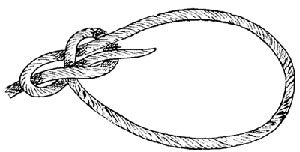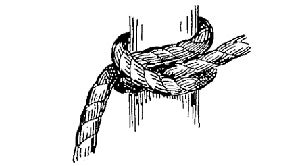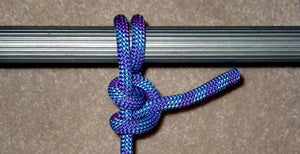How To Tie Secure Knots for Your PWC
Three knots that will keep your PWC its place
Most boaters learn a variety of knots to secure their craft, but personal watercraft owners often miss this bit of nautical know-how. That’s too bad, because a good knot is essential for everything from tying your PWC up at that dockside lunch spot, to anchoring it off the beach, to even giving a friend a tow.
Don’t feel like learning the complete sailor’s list? No worries, for you can get by with just about three…
Get ready to tie one on.
The Bowline

Of all the knots any watersports enthusiast will find useful, my absolute favorite is the bowline (pronounced bow-lin). Tie one and you’ve created a simple loop at the end of a line, a loop that can be used to secure your craft to a piling or pole, hooked through a dock ring, or even used to fasten two lines together. The bowline is easy to learn, and will only tighten the more load its put under. The best part about a bowline? It’s also the simplest to untie. No struggling with a tight knot, just pull up on one side and it almost comes apart by itself.
The bowline comes with a simple “story” that makes it easy to learn. The end of the line is the “rabbit”, and it comes up out of the hole (a loop you make in the line), goes around the “tree” (the line running back to your craft), and then back down the hole (again, the loop you’ve fashioned in the line).
Disadvantage to the bowline? It can work loose when not under load. For security, take an extra loop when forming the “rabbit hole.”
The Clove Hitch

The clove hitch is great for tying to a piling, and can also be tied when under load. One turn around the piling will hold your craft in place, allowing you to finish the knot without the worry of losing your craft. A clove hitch is also easy to modify on the fly, changing the length of the line.
That same advantage in adjustability, however, can be a disadvantage if it allows the knot to slip. One suggestion is to run a single, longer line from your craft’s bow, around a piling, and then secured to the stern grab handle or ski tow eye.
The Round Turn and Two Half-Hitches

Okay, time for a combo. A half-hitch is simple and quick, but needs a little more to make it truly useful. Try doubling it to secure a fender to a thin dock rail; better still, add the round turn around the object you’re trying to secure the line to. Just like the Clove Hitch, this will secure your craft and take the strain off the line, allowing you to finish off the knot.
Half-hitches should always be tied in the same direction. Add one more to the original for added security.
Related Reading
How to Repair Personal Watercraft Hull Damage
How To Ride a PWC with a Child
How to Ride a Stand-up PWC
Get PersonalWatercraft.com in your Inbox!
Like PersonalWatercraft.com on Facebook
Comments
Most Popular

2025 Yamaha JetBlaster PRO 2-Up Review

Remembering the Sea-Doo XP

2024 Kawasaki Jet Ski STX 160X Review

Whatever Happened to the Wetbike?

2017 Kawasaki Jet Ski Ultra 310LX Review












 Your Privacy Choices
Your Privacy Choices